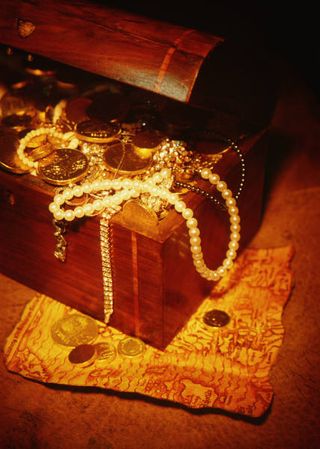 New rules and enforcement guidelines may render certain artwork not only illegal to export or import, but also unsalable within the United States. Houston is a very international city and residents have traveled the world, returning with valuable artwork.
New rules and enforcement guidelines may render certain artwork not only illegal to export or import, but also unsalable within the United States. Houston is a very international city and residents have traveled the world, returning with valuable artwork.
Valuing artwork is never an easy task. It gets all the more tricky with antiques composed of protected materials which cannot be legally sold, particularly ivory. How do you value a priceless yet worthless object?
The problem of valuation is not a new one, but it has taken some serious turns as of late. There is a helpful guide to the whole ordeal in a recent WealthManagement article titled “Zero Fair Market Value for Antiques?”
Regular readers will already know a good deal about the issues and the recent tax court decision in the Sonnabend case. Quickly stated: in that matter, the Sonnabend estate offered a $0.00 valuation for a famous painting. Its rationale? The painting could not have a “fair market value” since it also could not be sold under U.S. law. The piece was Raushenberg’s “Canyon” and “painting” is a loose term for this mixed media artwork. Problem: It included the remains of a bald eagle, which are protected under various laws and forbidden from sale.
The IRS said no dice after an odd analysis involving the possibility of illegal or foreign markets offering a price for fair market analysis. In sum: regulations forbidding the sale of items within an antique or piece of art do not mean that the tax based on “fair market value” will not be upheld.
Now to ivory. As the original article elaborates, elephant ivory has long been an issue in valuation for estates and taxation purposes. There have been certain workarounds and a notable exemption in the case of antiques. Nevertheless, it looks like the exemption has seen its last days.
The Fish and Wildlife Service issued “Questions and Answers about Director’s Order 210” which states:
Under a special rule that has not yet been revoked, items made from African elephant ivory can still be sold across State lines and exported whether they qualify for the ESA [Endangered Species Act] antiques exception or not. We are working on the regulatory action needed to change this regulation.
As new regulations have yet to be published, it is hard to say what the legal circumstances facing estates and family heirlooms may yet be. On the other hand, it is clear that it will become all the more difficult. According to the sources, the market for ivory antiques has already frozen in indecision.
Do you and your family own special antiques and how do you plan for them? Specific plans must be made for items containing ivory and other substances. In the end, it might simply be illegal and/or impossible to pass them down. These new regulations may be forthcoming, but the issue is one to address sooner rather than later so as to safeguard what you can. Now is the time to devise a strategy to keep those precious family heirlooms or ensure the highest value for the unique antique collection.
For additional informatin on estate law and estate planning in Houston, please visit my website.
Reference: WealthManagement (June 19, 2014) “Zero Fair Market Value for Antiques?”
 Houston Estate Planning and Elder Law Attorney Blog
Houston Estate Planning and Elder Law Attorney Blog

